How to Choose a Warehouse Management System
How to Choose a Warehouse Management System
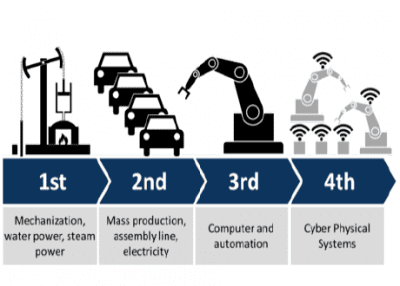 By now, most sizable warehouses have already been automated. When coming to choose a warehouse management system, managers typically seek to replace their legacy system with one that meets changing company needs, addresses increasing operational costs, and integrates seamlessly with new ERP systems, while obtaining quick return on investment (affordability) and to make the implementation of the system as smooth as possible.
By now, most sizable warehouses have already been automated. When coming to choose a warehouse management system, managers typically seek to replace their legacy system with one that meets changing company needs, addresses increasing operational costs, and integrates seamlessly with new ERP systems, while obtaining quick return on investment (affordability) and to make the implementation of the system as smooth as possible.
Choosing the warehouse management system that matches the company’s needs, requirements, budget, and expectations requires attention and a high degree of professional expertise. The abundance of WMS software solutions and the broad range of warehousing methods and technologies make the choice difficult.
All warehouse management systems aim to meet several goals that as a whole should provide the expected benefits for the client. Knowing what to expect from the system makes the choice between the various WMSs easier. When replacing an existing WMS, a logistics-oriented manager should ask for the following features:
* Improving accuracy of inventory and operations
* Maximizing warehouse space utilization
* Improving order fulfillment
* Providing low ownership cost
* Delivering quick ROI
* Reducing stock while meeting demand
* Lowering decision-making time
* Allowing for quick implementation
To meet these and other expectations requires understanding the key aspects of the future WMS solution, the manner in which these aspects will meet existing needs, and the additional benefits that arise from choosing a specific warehouse management system. The following aspects of any WMS are relevant to the logistics-oriented manager:
Functionality. What does the system offer? Most WMS solutions offer a broad range of functionalities that cover the basic aspects of managing a warehouse. But in addition to inventory management, replenishment, and loading and shipping warehouses also require a more sophisticated set of functionalities such as a billing module, cross-dock capabilities, RFID support, etc.
Flexibility. How easily does the system adapt itself to the client’s needs? A flexible warehouse management system is adaptable to different warehousing scenarios without the need to invest exceptional resources in adaptation. The more flexible the system is, the more easily it integrates in a working warehouse and complies with existing warehouse operations and working methods.
User Friendliness. A WMS must be user friendly. In addition to saving on training costs, user friendliness helps avoid operating mistakes.
ERP Interfacing. The choice of a warehouse management system depends heavily on its ability to integrate with the ERP systems used by the client. Businesses depend on the successful flow of information between company units. The WMS must be able to accurately support this flow of information.
Innovativeness. The technology that underlies the WMS is crucial for its ability to keep abreast of progress in the industry. An outdated system is unable to adapt to future technological requirements, which leads eventually to the need for its replacement.
Disadvantages. Every system has disadvantages. Getting to know the disadvantages of a WMS helps avoid surprises and unexpected costs.
Choosing the right warehouse management system is important. Other issues that …






 For many years since the invention of the gas car. People have been searching for a way to get better gas mileage. All of this searching has come with many speed bumps. Even with all the speed bumps in the way t was rather easy to get better gas mileage. Using a gas conversion kit not only helped us get better gas mileage. It was also much better for the car.
For many years since the invention of the gas car. People have been searching for a way to get better gas mileage. All of this searching has come with many speed bumps. Even with all the speed bumps in the way t was rather easy to get better gas mileage. Using a gas conversion kit not only helped us get better gas mileage. It was also much better for the car. Whether your small business uses a small business accounting software package, such as QuickBooks or Peachtree, or a custom-written legacy system that dates back to the early to mid-1990’s, there are a number of telling signs your business is ready to make the jump to an ERP software system. Some of the leading indicators that your small business is ready for an ERP include:
Whether your small business uses a small business accounting software package, such as QuickBooks or Peachtree, or a custom-written legacy system that dates back to the early to mid-1990’s, there are a number of telling signs your business is ready to make the jump to an ERP software system. Some of the leading indicators that your small business is ready for an ERP include: Russia is the leading producer of fuel oil. They produce more than they can consume, unlike USA that does not produce enough to cater for all consumers. There are a lot of refineries in Russia which can supply up to a million metric tons of fuel oil monthly. A few of the notable suppliers of oil in Russia which can deliver are Lukoil, Bulgarneft, Bashneft, Surgutneftegas, Rosneft etc. These are the best companies to buy fuel from.
Russia is the leading producer of fuel oil. They produce more than they can consume, unlike USA that does not produce enough to cater for all consumers. There are a lot of refineries in Russia which can supply up to a million metric tons of fuel oil monthly. A few of the notable suppliers of oil in Russia which can deliver are Lukoil, Bulgarneft, Bashneft, Surgutneftegas, Rosneft etc. These are the best companies to buy fuel from. Unless you’ve been living under a rock for the last 20 years, you probably have heard about OPEC. OPEC is an acronym for Organization of Petroleum Exporting Countries. Twelve countries – Algeria, Angola, Ecuador, Iran, Iraq, Kuwait, Libya, Nigeria, Qatar, Saudi Arabia, the United Arab Emirates, and Venezuela make up the membership of the cartel.
Unless you’ve been living under a rock for the last 20 years, you probably have heard about OPEC. OPEC is an acronym for Organization of Petroleum Exporting Countries. Twelve countries – Algeria, Angola, Ecuador, Iran, Iraq, Kuwait, Libya, Nigeria, Qatar, Saudi Arabia, the United Arab Emirates, and Venezuela make up the membership of the cartel. In the early years, the existence of gas stations was attributed to its function, which is, dispensing fuel to the vehicles. But now, the face of Gas Stations has changed immensely. They have bow become a retail – marketing sales tool. Supermarkets, couponing, scanning, video displays and eating joints have now become a common function of every gas station that you will visit. From strictly functional they have evolved to be multipurpose.
In the early years, the existence of gas stations was attributed to its function, which is, dispensing fuel to the vehicles. But now, the face of Gas Stations has changed immensely. They have bow become a retail – marketing sales tool. Supermarkets, couponing, scanning, video displays and eating joints have now become a common function of every gas station that you will visit. From strictly functional they have evolved to be multipurpose. It is of course no secret that gas has been getting expensive. With the U.S. dollar going down, there are experts who feel that we may be looking at gas prices in between $4.50 to $5 at the pump next summer. Many countries in Europe already pay much more than that!
It is of course no secret that gas has been getting expensive. With the U.S. dollar going down, there are experts who feel that we may be looking at gas prices in between $4.50 to $5 at the pump next summer. Many countries in Europe already pay much more than that! How many of you forget something that you were going to do today but you won’t remember until tomorrow? I know everyone’s hands would be raised if we were in a fleet fuel seminar. If you forgot what you were going to do today until tomorrow, do you remember where fleet fuel prices have been in the last couple of years?
How many of you forget something that you were going to do today but you won’t remember until tomorrow? I know everyone’s hands would be raised if we were in a fleet fuel seminar. If you forgot what you were going to do today until tomorrow, do you remember where fleet fuel prices have been in the last couple of years? While talking about wholesale business we cannot forget the importance of warehouse and its management. Warehouse management plays a vital role in the success and failure of wholesale suppliers or distributors. Most of the wholesalers face the same problem of getting short of space, too high costs and poor productivity. All these problems are due to a warehouse that is not organized and the wholesalers will not be able to use their space with maximum results. There are also some warehouses with such a layout that it creates hurdles in business. To properly digest the idea of warehouse management we have to first understand what is warehouse? Warehouse is a space that is utilized for providing an adequate environment and protection to the merchandise in bulk storage. Warehouses are meant to store products safely in bulk.
While talking about wholesale business we cannot forget the importance of warehouse and its management. Warehouse management plays a vital role in the success and failure of wholesale suppliers or distributors. Most of the wholesalers face the same problem of getting short of space, too high costs and poor productivity. All these problems are due to a warehouse that is not organized and the wholesalers will not be able to use their space with maximum results. There are also some warehouses with such a layout that it creates hurdles in business. To properly digest the idea of warehouse management we have to first understand what is warehouse? Warehouse is a space that is utilized for providing an adequate environment and protection to the merchandise in bulk storage. Warehouses are meant to store products safely in bulk. Just as a car needs fuel to run, our body needs to be properly hydrated to function during a run. Here are some practices you should consider implementing as part of your life as a runner.
Just as a car needs fuel to run, our body needs to be properly hydrated to function during a run. Here are some practices you should consider implementing as part of your life as a runner. Any business owner that has to operate a warehouse knows that the process cannot operate efficiently if there isn’t a solid system in place. A solid system enables for every phase of the warehouse operations to be solid as possible.
Any business owner that has to operate a warehouse knows that the process cannot operate efficiently if there isn’t a solid system in place. A solid system enables for every phase of the warehouse operations to be solid as possible. The main function of a vehicle’s fuel delivery system is to provide constant flow of fuel to the engine at required volume and pressure. Various mechanical and electrical components constitute a vehicle’s fuel delivery system, each of which has its own function. Proper functioning of every component positively impacts the performance of the engine, while even a little malfunction of any part could seize its operation. Hence, understanding this system enables the user to identify and fix minor issues, helping him minimize the negative impact on the engine’s performance on the whole.
The main function of a vehicle’s fuel delivery system is to provide constant flow of fuel to the engine at required volume and pressure. Various mechanical and electrical components constitute a vehicle’s fuel delivery system, each of which has its own function. Proper functioning of every component positively impacts the performance of the engine, while even a little malfunction of any part could seize its operation. Hence, understanding this system enables the user to identify and fix minor issues, helping him minimize the negative impact on the engine’s performance on the whole. When it comes to saving money for your business, you have to be careful about where you cut the budget. Many companies begin by cutting payroll, but by cutting payroll, you’re putting more stress on other employees. Business owners need to start thinking outside of the box. A great way to save money, for example, is to cut down on fuel costs. In this article, you will learn why fuel management is more important than ever for businesses.
When it comes to saving money for your business, you have to be careful about where you cut the budget. Many companies begin by cutting payroll, but by cutting payroll, you’re putting more stress on other employees. Business owners need to start thinking outside of the box. A great way to save money, for example, is to cut down on fuel costs. In this article, you will learn why fuel management is more important than ever for businesses. Big, spacious, and vital these three words are some in a laundry list of adjectives that properly describes a warehouse. Every product that comes from an adjacent town, a neighboring state, or from across the ocean first lands on this gargantuan storage facility. From there, warehouse staff coordinates the flow of goods to be distributed to retail stores and other establishments.
Big, spacious, and vital these three words are some in a laundry list of adjectives that properly describes a warehouse. Every product that comes from an adjacent town, a neighboring state, or from across the ocean first lands on this gargantuan storage facility. From there, warehouse staff coordinates the flow of goods to be distributed to retail stores and other establishments. Many homes these days still use home heating oil to keep their houses warm in the wintertime, as well as to heat the water in their hot water tank or for their washer and dishwasher. As everyone has probably noticed, anything that is made of an oil product has been going up in price on almost a daily basis.
Many homes these days still use home heating oil to keep their houses warm in the wintertime, as well as to heat the water in their hot water tank or for their washer and dishwasher. As everyone has probably noticed, anything that is made of an oil product has been going up in price on almost a daily basis.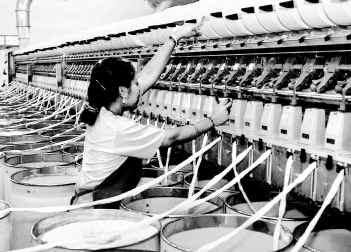 It’s not a big secret, from the common man to the business industry that the recession has hurt them all. Through those lean times, companies of all sizes found that they were making changes, scaling back and even losing well more than anticipated. When the economy moves to a slump it hurts, from the smallest to the largest, with everyone else being caught in between. Now they say that when the bottom is hit there is only one way to travel and that is up. As the economy begins to show signs of growth and life, companies are finding that their phones are ringing, orders are coming in and profits are beginning to once again come through. Along with this, comes another change! For those looking to roll with the change, improve their competitive edge and even take their company to the next level they should really look at their warehouse operations! Yes, that’s right, the warehouse processes. Here’s a little more about why:
It’s not a big secret, from the common man to the business industry that the recession has hurt them all. Through those lean times, companies of all sizes found that they were making changes, scaling back and even losing well more than anticipated. When the economy moves to a slump it hurts, from the smallest to the largest, with everyone else being caught in between. Now they say that when the bottom is hit there is only one way to travel and that is up. As the economy begins to show signs of growth and life, companies are finding that their phones are ringing, orders are coming in and profits are beginning to once again come through. Along with this, comes another change! For those looking to roll with the change, improve their competitive edge and even take their company to the next level they should really look at their warehouse operations! Yes, that’s right, the warehouse processes. Here’s a little more about why: Whether you are involved in manufacturing, shipping, or just handle any kind of large volume, you are always looking for ways to make your processing more efficient. After all, greater efficiency means more volume in less time, which means more overall profits. One way to help reduce waste and improve the overall performance of your facilities is by improving current material handling systems, replacing warehouse management systems, or installing new automated conveyor systems if none are in use. How do you know if your setup might be made more efficient? Follow these tips and find out.
Whether you are involved in manufacturing, shipping, or just handle any kind of large volume, you are always looking for ways to make your processing more efficient. After all, greater efficiency means more volume in less time, which means more overall profits. One way to help reduce waste and improve the overall performance of your facilities is by improving current material handling systems, replacing warehouse management systems, or installing new automated conveyor systems if none are in use. How do you know if your setup might be made more efficient? Follow these tips and find out. Most of the warehouses in Europe have been on the move of employing new and technology-oriented mechanisms in an attempt to improve their warehouse management system. Before we go any further, one ought to know that the only way to get warehouse supply chains to improve is by employing acceptable and manageable warehouse management systems. As a large corporation, you need to appreciate each and every detail that will add value to your service delivery. Therefore, as a well-developed warehousing firm with the aim of gaining popularity in Britain and other parts of the European continent, I suggest that you employ the following.
Most of the warehouses in Europe have been on the move of employing new and technology-oriented mechanisms in an attempt to improve their warehouse management system. Before we go any further, one ought to know that the only way to get warehouse supply chains to improve is by employing acceptable and manageable warehouse management systems. As a large corporation, you need to appreciate each and every detail that will add value to your service delivery. Therefore, as a well-developed warehousing firm with the aim of gaining popularity in Britain and other parts of the European continent, I suggest that you employ the following. With the main UK political parties wanting to create thousands of new green jobs over the next ten years it will be interesting to see how we aim to become a market leader in green technology which is where China are currently the world leader. India is aiming to be a solar country within 10 years as it deals with decreasing fossil fuels and population growth that is gulping petrol and oil at an unprecedented rate.
With the main UK political parties wanting to create thousands of new green jobs over the next ten years it will be interesting to see how we aim to become a market leader in green technology which is where China are currently the world leader. India is aiming to be a solar country within 10 years as it deals with decreasing fossil fuels and population growth that is gulping petrol and oil at an unprecedented rate. Using an underground fuel tank is a convenient and space-saving means to store petrol for businesses that do not have the space to accommodate an above ground fuel tank. This type of tank is commonly used by industrial businesses that require large amounts of fuel to be available on site as its storage capacity ranges from 1,000 litres to 200,000 litres. However, using underground fuel tanks comes with the risk of rust and corrosion. Rusting and corrosion can lead to leakage of the petrol, which will then contaminate the soil and ground water.
Using an underground fuel tank is a convenient and space-saving means to store petrol for businesses that do not have the space to accommodate an above ground fuel tank. This type of tank is commonly used by industrial businesses that require large amounts of fuel to be available on site as its storage capacity ranges from 1,000 litres to 200,000 litres. However, using underground fuel tanks comes with the risk of rust and corrosion. Rusting and corrosion can lead to leakage of the petrol, which will then contaminate the soil and ground water. Utilizing what Milwaukee claims to be the world’s most advanced technologies to innovate this 18v drill/driver, the Milwaukee Fuel 2603-22CT is designed to incorporate the best of both power and ergonomics. Based on the performance of the tool, I’m inclined to believe Milwaukee’s aforementioned claim of superiority to be nothing short of the absolute truth. Producing a presently unrivaled degree of power and performance and featuring a comfortably compact body design, the M18 Fuel drill/driver is built for the ultimate over-achiever and ideal for the most demanding professional.
Utilizing what Milwaukee claims to be the world’s most advanced technologies to innovate this 18v drill/driver, the Milwaukee Fuel 2603-22CT is designed to incorporate the best of both power and ergonomics. Based on the performance of the tool, I’m inclined to believe Milwaukee’s aforementioned claim of superiority to be nothing short of the absolute truth. Producing a presently unrivaled degree of power and performance and featuring a comfortably compact body design, the M18 Fuel drill/driver is built for the ultimate over-achiever and ideal for the most demanding professional. Gel fuel fireplaces are excellent and amazing additions to any type of residential homes. On top of that, they are also cost-effective and efficient without giving the homeowners a headache from the price and installation process.
Gel fuel fireplaces are excellent and amazing additions to any type of residential homes. On top of that, they are also cost-effective and efficient without giving the homeowners a headache from the price and installation process. I realize that many Americans are feeling the pinch from this recession/depression, but have you noticed the slow and steady prices of gas recently?
I realize that many Americans are feeling the pinch from this recession/depression, but have you noticed the slow and steady prices of gas recently? Claiming VAT back on fuel used in a professional capacity has been the bane of my life for as long as I can remember. When we made the switch to using fuel cards, I had imagined that somehow, claiming VAT back would be even more difficult. I can honestly say that fuel cards have left me pleasantly surprised.
Claiming VAT back on fuel used in a professional capacity has been the bane of my life for as long as I can remember. When we made the switch to using fuel cards, I had imagined that somehow, claiming VAT back would be even more difficult. I can honestly say that fuel cards have left me pleasantly surprised. You don’t think speed when you think about a semi truck. You think raw power and cruising down the interstate; steady as a rock. Also you don’t think about a hybrid vehicle. They’re supposed to be two tons of metal plowing down the asphalt. Not a whirring, quite vehicle that consumes meager amounts of fuel.
You don’t think speed when you think about a semi truck. You think raw power and cruising down the interstate; steady as a rock. Also you don’t think about a hybrid vehicle. They’re supposed to be two tons of metal plowing down the asphalt. Not a whirring, quite vehicle that consumes meager amounts of fuel. Have you installed your kit in your vehicle yet? How much did your fuel mileage increase? How much are you saving in your monthly fuel expenditures? Do you have answers for any of these questions? Let me ask you one more: are you aware that the installation of hydrogen conversion kits is an investment toward a cleaner Earth for generations to come?
Have you installed your kit in your vehicle yet? How much did your fuel mileage increase? How much are you saving in your monthly fuel expenditures? Do you have answers for any of these questions? Let me ask you one more: are you aware that the installation of hydrogen conversion kits is an investment toward a cleaner Earth for generations to come? Logistics software can help operate any business that requires you to have a warehouse streamlining even the toughest of businesses.
Logistics software can help operate any business that requires you to have a warehouse streamlining even the toughest of businesses. During both good times and bad, it’s essential for you to find ways to make your business operate more efficiently. Given today’s business environment, your very survival may depend upon your ability to reduce costs and increase productivity. This article will show you how an electronic warehouse management system can help your business thrive.
During both good times and bad, it’s essential for you to find ways to make your business operate more efficiently. Given today’s business environment, your very survival may depend upon your ability to reduce costs and increase productivity. This article will show you how an electronic warehouse management system can help your business thrive.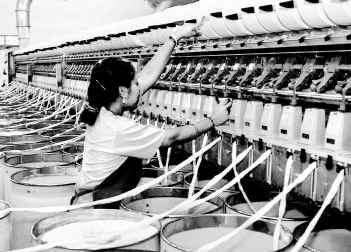 If you’re looking to save money on your heating, then you might have think you’ve tried everything. Instead of being cold during the day, or coming home to a cold house after work, why not see if some of these can make your home warmer whilst saving you money.
If you’re looking to save money on your heating, then you might have think you’ve tried everything. Instead of being cold during the day, or coming home to a cold house after work, why not see if some of these can make your home warmer whilst saving you money. Research has shown that the huge increase in petrol and diesel prices is the biggest current challenge facing fleet managers. On top of this it is evident that not only are the prices increasing but that there is a large amount of wastage.
Research has shown that the huge increase in petrol and diesel prices is the biggest current challenge facing fleet managers. On top of this it is evident that not only are the prices increasing but that there is a large amount of wastage.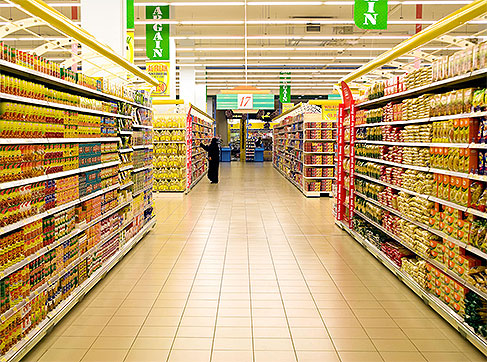 Since the launch of Ford’s EcoBoost family, demand for the engine has increased every month; and not just for current Ford owners. Customers who had not previously considered Ford vehicles are now attracted to the fuel-friendly engine family. And it’s not hard to see why.
Since the launch of Ford’s EcoBoost family, demand for the engine has increased every month; and not just for current Ford owners. Customers who had not previously considered Ford vehicles are now attracted to the fuel-friendly engine family. And it’s not hard to see why. A little known fact is that gasoline can freeze. In fact, it can freeze while you are operating your vehicle. Over-the-Road truck drivers have long touted the benefits of fuel additive while driving in freezing temperatures. Gasoline and diesel are a mixture of hydrocarbons and the components have different freezing points. Huh? For the scientists out there, I’m sure you just went what a simplistic approach. But for the average non-mechanically inclined American who wants to protect their car and not get stuck in the slush, I offer a couple of simple tips.
A little known fact is that gasoline can freeze. In fact, it can freeze while you are operating your vehicle. Over-the-Road truck drivers have long touted the benefits of fuel additive while driving in freezing temperatures. Gasoline and diesel are a mixture of hydrocarbons and the components have different freezing points. Huh? For the scientists out there, I’m sure you just went what a simplistic approach. But for the average non-mechanically inclined American who wants to protect their car and not get stuck in the slush, I offer a couple of simple tips. LPG (Liquefied Petroleum Gas) is a perfect solution to increasing fuel prices and automotive pollution. It is a flammable mixture of propane and butane that turns into a liquid under moderate pressure. Thus, the name given to this gas is Liquefied Petroleum gas.
LPG (Liquefied Petroleum Gas) is a perfect solution to increasing fuel prices and automotive pollution. It is a flammable mixture of propane and butane that turns into a liquid under moderate pressure. Thus, the name given to this gas is Liquefied Petroleum gas.
.jpg/220px-Photo_by_Mona_Mijthab,_July_2011_(6349812257).jpg) Although opinions vary on the future of fossil fuels such as oil, there is little debate that there is a finite supply of oil and that, at some point, mass produced alternative forms of energy will need to become economically viable. One alternative that has gained a lot of momentum is algae fuel.
Although opinions vary on the future of fossil fuels such as oil, there is little debate that there is a finite supply of oil and that, at some point, mass produced alternative forms of energy will need to become economically viable. One alternative that has gained a lot of momentum is algae fuel.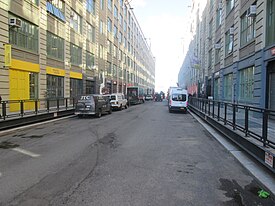 With the high price of gasoline, I can safely say to you and recommend that if you are planning on purchasing a new automobile that you look for a very aerodynamic car to buy. I have a number of reasons for this and I like to go through that with you if you have a few minutes. You see, being the coordinator for a think tank which operates online we often talk about innovative designs and aerodynamic efficiency.
With the high price of gasoline, I can safely say to you and recommend that if you are planning on purchasing a new automobile that you look for a very aerodynamic car to buy. I have a number of reasons for this and I like to go through that with you if you have a few minutes. You see, being the coordinator for a think tank which operates online we often talk about innovative designs and aerodynamic efficiency. Buying a new hybrid would be great. Unfortunately new hybrids usually come with a premium price. That in my mind negates any cost savings you hope to gain. Most hybrids tend to cost $3-8k more than their non hybrid version, and don’t seem to get any more than maybe 10-15 miles more per gallon.
Buying a new hybrid would be great. Unfortunately new hybrids usually come with a premium price. That in my mind negates any cost savings you hope to gain. Most hybrids tend to cost $3-8k more than their non hybrid version, and don’t seem to get any more than maybe 10-15 miles more per gallon.